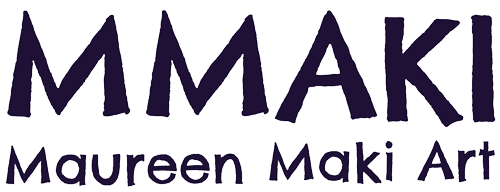A Brief History of Collage
We are really in the thick of summer now. I hope you are doing well and enjoying your summer time despite these unusual circumstances. I am staying in and painting and thinking. I've spent time diving deeper into art history as it relates to me and have lots to say about collage below.
I am really enjoying a flurry of painting activity. I'm set up for a large new series of small paintings. As of now, they are 9" x 11" paper on paper pieces. See one below. If you want to see more, check my instagram account.
New work in the studio, 2020
Now I will move into my brief history of collage. The basic concept of collage is most interesting – putting different pieces together to create something new. This simple idea is like chemistry where different elements combine to create everything we perceive. The name collage comes from the French word “coller” which means to glue or to stick together. In the visual arts, materials used often include magazine and newspaper clippings, colored or handmade papers (that's me), found objects and portions of other artworks.
You can trace collage back to 200 B.C. China in conjunction with the invention of paper. However, collage does not have to be made with paper. It can be music, video, paint, wood, sculpture and more. When used in sculpture, it is sometimes called assemblage. Collage was the precursor to what is called mixed media, a catch-all phrase used to explain the artist’s technique of working in multiple mediums.
You can trace different types of collage through the ages from 10th century calligraphy in Japan, to the gold leaf panels of 15th century Gothic Cathedrals, to photo albums made by 19th century hobbyists. Collage is a great equalizer of practitioners; no specialty materials or years of training are required to make a collage. Kids learn how to make them in their early years at school.
Collage started to be taken seriously by the fine art world in the early 20th century when Georges Braque and Pablo Picasso experimented with affixing pre-made materials to their paintings. Every modern art movement after that included some form of collage. It was often employed to make comment on the juxtaposition of opposing ideas, drawing connections between items that may not otherwise relate.
Bringing the War Home by Martha Rosler, circa 1970
Dadaism and its combination of seemingly worthless objects placed together was the perfect for collage, and Surrealism after that. Henri Matisse, in the later years of his career, started collaging paper shapes onto his canvases using his famous cut-out technique. In the 1960’s, Pop Art was another movement ripe for the juxtaposition of differing materials. Robert Rauchenberg was famous for his large-scale sculptural paintings using a variety of imagery and materials.
The list of artists who use or used collage is endless because there are so many types of collage. The number of artists who consider their work mixed media is even greater. Below is a very short list of female collage artists over the years.
Mary Delaney, 1700’s (see my blog for more details on Ms. Delaney)
Hannah Hoch, 1800 - 1900's
Lee Krasner, 1900’s, used cut up portions of her own discarded paintings
Louise Nevelson, 1900’s, amazing wood relief collage sculpture (assemblage at its finest)
Lorna Simpson, modern day photo collage
Martha Rosler, modern day photo collage
Nina Yuen, modern day film collage
Artists crave new techniques and different ways of creating. Collage offers them a simple and powerful technique for bringing together various elements, allowing them to paste them together into a whole new idea. Like in chemistry, different pieces come together to create something totally new.
Louise Nevelson, sculpture collage in the 1960's
Hope you enjoyed my quick look at the history of collage. It's always nice to look at what has been done before. It's good to point out women artists as well. Even though most of the artists I know are women, art history and monetarily successful artists are overwhelmingly men.



